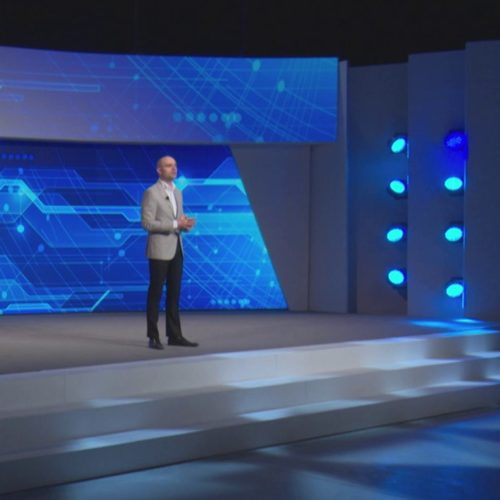The Emerging Age of Technological Telepathy
 It might seem premature, but I believe the age of technological telepathy is upon us, and it won’t be long until our thoughts alone begin to manipulate the world around us.
It might seem premature, but I believe the age of technological telepathy is upon us, and it won’t be long until our thoughts alone begin to manipulate the world around us.
We’ll be using intracranial implants, nanobots, functional magnetic resonance imaging (fMRI), or Electroencephalography (EEG) headbands; and our computers, our prosthetics, our avatars will all be controlled by thought alone.
Biological telepathy and the somewhat related telekinesis, are recurring themes in science fiction and fantasy fiction, with perhaps the Force of the Star Wars films being one of the most well known. However, the existence of biological telepathy has not received widespread acceptance, cold reading is understood, if limited in use, and the field of parapsychology is heavily criticised for being pseudoscientific.
Technological telepathy is not predictive behaviour, as we see in robots that interact with human co-workers without harm. Nor is technological telepathy the emerging science of implanting electrodes alongside the nerves and muscles of amputees, even though these technologies are quite impressive in their own right.
Telepathy using technology goes much further, for example DARPA’s threat warning system that uses an EEG cap in concert with the subconscious mind’s ability to detect threats. One could argue that EEG headbands for playing games are also part of the emerging field.
We see fMRI coming into use to read the mind, where it has been successfully used to communicate with some non-responsive patients. Similarly, fMRI is being used for lie detection in court.
Mind reading is here now, and we can imagine its use won’t be restricted as it becomes affordable or as benefits outweigh costs. Marketers, airport security, recruiters, retirement homes, and many more industries might find fMRI and EEG mind reading quite compelling.
However, there is even more research occurring that is demonstrating tremendously exciting advances. Monkeys and rats have demonstrated that via implants they are able to control robotic arms and learn from each other.
In humans, we have seen EEG effectively used for brain to brain control of another person’s finger to play a shoot ’em up game, whilst exoskeleton legs have been controlled with thought alone.
Nascent technology it may be, yet already technological telepathy (Should we say techepathy?) is being talked about as a near term projection. It may offer far-reaching possibilities for improvements in our interpersonal communications such as direct mind to mind communication within 10 years. Will this be restricted to telepathic phone calls? Or will the full richness of sentient experience be shareable?
Imagine a world where you and your lover experience a mind merge, each sharing all of your feelings and sensations. I’m not sure how well our existing brains would handle two sets of experiences simultaneously, and I wonder if we would need implants or nanotechnology to fast-switch between sensations so as not to overload our biological components.
Our minds allow us to experience emotions, moods, dreams, passions, visions, to be creative, and we are connected to our world via our senses. To share that with loved ones at the synaptic level might be wonderful.
To give an example, if I am wandering in the mountains of Spain where I live and admiring the wild flowers around me, I would be able to share the full richness of my experience with a dear friend without having to find the words to describe what I see and feel. Video is better, but is still so limiting.
What if I could broadcast my complete experience to YouTube, and you could enter my experience recording? And what if the memory editing software that I’ll have on my smartphone or downloaded to my implant could splice together several rich memories to allow more interaction? It isn’t too fanciful if we extrapolate the SpaceX virtual 3D simulation and allow the mind to directly manipulate the model, or bypass our eyes and use implants to stimulate the visual cortex directly.
I’d love to share the smells, weather, sights, sounds, textures, and my friend might close their eyes and immerse themselves in my physical experience. If they could communicate with me as well, we’d no doubt enjoy the experience more. Imagine if my friend requests I take a closer look at something that ordinarily doesn’t interest me?
Brain to brain control of the body is here, but what is possible? Could we see a future where people lease or lend their physical bodies to others? As an aside, could people living in picturesque places become hosts for telepathic tourism?
I do however worry that there are some negatives we need to be aware of and try to address is we can. The most important issue to me is mitigating against brain hacking. How do we do this? Since much of our science takes its lead from science fiction novels, could a clue lie in fiction? One of my own favourite writers E.E. ‘Doc’ Smith wrote extensively about Psionics, with each character having defenses of the mind to avoid eavesdropping or mind control. If memory serves me correctly, these were all based on a form of meditative teaching.
At some point Singularitarians will need to reflect quite seriously on the impacts of technological telepathy and develop techniques to protect personal privacy, or telepathic attacks by criminals, the state, and terrorists. Individuals will need to be taught to suppress thoughts, firewalls will be needed in our implants and external readers. I doubt that tin foil caps or anti-virus software are going to work terribly well.
I believe the field of technological telepathy is very likely to be one of the founding pillars of superintelligence as we look to the Singularity. The genie is out of the box, technological telepathy is here.
About the Author:
 Michelle Cameron is an English teacher and career coach in Spain, and a Singularitarian. She is especially interested in transhumanism, the quantum world, and space exploration.
Michelle Cameron is an English teacher and career coach in Spain, and a Singularitarian. She is especially interested in transhumanism, the quantum world, and space exploration.
Related articles
- Mind Reading, Thought Control and Neuro Marketing: Is “the Lord of the World” still science fiction?
- Hijacking Brains: Now Worms, Later… Zebra Fish…
- The BrainGate Project: Paralysed Woman Moves Robot Hand With Her Mind
- NeuroMarketing To Help Advertisers Read Our Minds, Sell Us More Crap We Don’t Need
- Ramez Naam on Singularity 1 on 1: We Are The Ones Who Create The Future









